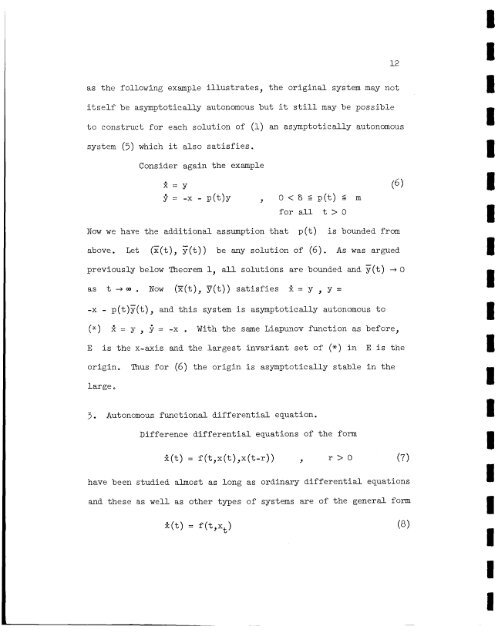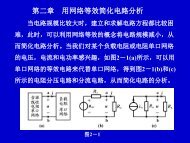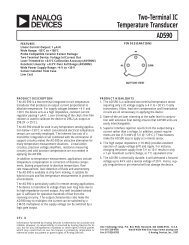AN INVARIANCE PRINCIPLE IN THE THEORY OF STABILITY
AN INVARIANCE PRINCIPLE IN THE THEORY OF STABILITY
AN INVARIANCE PRINCIPLE IN THE THEORY OF STABILITY
Create successful ePaper yourself
Turn your PDF publications into a flip-book with our unique Google optimized e-Paper software.
..-<br />
Aid<br />
as the following example illustrates, the original system may not<br />
itself be asymptotically autonomous but it still may be possible<br />
to construct for each solution of (1) an asymptotically autonomous<br />
system (7) which it also satisfies.<br />
Consider again the example<br />
?= y (6)<br />
y=-x- P (t)Y , o < s ~ p ( t ) ~ m<br />
Now we have the additional assumption that<br />
for all t > 0<br />
p(t)<br />
is bounded from<br />
above. Let (x(t),<br />
-<br />
y(t)) be any solution of (6). As was argued<br />
previously below Theorem 1, all solutions are bounded and y(t) + 0<br />
as t + Q) .<br />
Now (E(t), y(t)) satisfies k = y , y =<br />
-x - p(t)y(t), and this system is asymptotically autonomous to<br />
(")<br />
E<br />
2= y, $= -x . With the same Liapunov function as before,<br />
is the x-axis and the largest invariant set of (*) in E is the<br />
origin.<br />
Thus for (6) the origin is asymptotically stable in the<br />
large<br />
3. Autonomous functional differential equation.<br />
Difference differential equations of the form<br />
2(t) = f(t,x(t),x(t-r)) 9 r > O (7)<br />
have been studied almost as long as ordinary differential equations<br />
and these as well as other types of systems are of the general form









